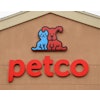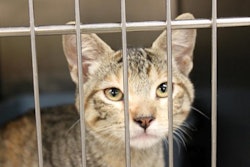Consumers make decisions about what to eat based not only on cultural traditions, family habits, personal taste preferences and household budgets, but also on evolving health, nutrition, environmental and political concerns and ideals. This holds particularly true for shoppers in the natural food channel, which has long been an incubator for innovation.
Branching out from the natural channel, for example, sales of grass-fed meat and dairy products continue to grow. Especially in major metropolitan markets, grass-fed protein products are multiplying, ranging from beef, bison/buffalo, lamb and goat meat to milk, cheese, butter, yogurt, ice cream, whey powder and beyond. Forbes (January 29, 2016) has reported that “Demand for grass-fed beef has grown at an annual rate of 25% to 30% for the past decade at the same time that per capita beef consumption for traditional beef products continues to decline.” As another sign that sales growth is greener on the grass-fed side of the fence, Datassential MenuTrends tracking data show that 3% of eating places overall, 4% of fast-casual restaurants and 6% of fine dining establishments now offer grass-fed menu options.
The natural channel trend in pet products
As noted in Packaged Facts’ Natural, Organic and Eco-friendly Pet Products (October 2016), many consumers believe, and many grass-fed protein marketers convey, that grass-fed proteins offer more health benefits and better nutrition. For example, research has shown that grass-fed beef contains more omega-3 fatty acids and less saturated and mono-unsaturated fat than does feedlot beef, and that grass-fed protein is less likely to contain antibiotics and hormones. In addition, many consider grass-fed protein to be eco-friendlier—although this is not necessarily the case, because grass-fed can increase the environmental carbon footprint of meat, calling for larger numbers of livestock and heavier use of land use and water resources.
While the expense of grass-fed beef for pet foods may be off-putting to many consumers, pet owners committed to higher-quality meats and more ethical food production—that is, consumers who have helped drive the exotic meat and game trend in pet food—may well see grass-fed protein as worth the cost. Packaged Facts survey data show that 5% of dog owners and 6% of cat owners who buy red meat-based pet foods purchase pet foods marketed with claims such as ranch-raised or grass-fed (see Figure 1).

FIGURE 1: A minority of pet food consumers indicate that they pay attention to higher-quality and/or ethical claims in their pet food products.
Another natural channel and metropolitan trend knocking on pet food’s door is bone broth—including in grass-fed versions. Bone broth contains minerals that support the immune system and collagen for joint health. Reflecting an update and culinary upgrade on conventional ready-made broths and stocks, the bone broth trend is a natural both for pet food formulation and, in pet nutrition-adapted versions, as a gravy and moistener for dry pet foods.
Plant-based protein options expanding in pet food
In addition, new options are opening in pet food as plant-based protein products in the human food industry become more affordable, available and appealing. Marketers, retailers and consumers are showing keen interest in non-soy, non-GMO, gluten-free, allergen-free and sustainable plant protein options. While there are significant concerns associated with feeding dogs and especially cats (which are more purely carnivores) a meat-free diet, plant-based proteins as a part of the protein mix can diversify nutrition and lessen concerns over digestive, skin and coat, and other adverse responses sometimes associated with meat- or poultry-based pet foods.
“Superfood” ingredients (such as leafy greens or blueberries) and pulses (such as peas/garbanzos, lentils and beans) have been increasingly visible in pet food formulation. These trends have gained resonance as a growing share of pet parents are themselves vegetarian-food-option friendly, even though only a small minority are strictly vegetarian (see Table 1).

TABLE 1: The vegetarian/non-meat protein trend in pet food is small but gaining some ground, in spite of the vast minority of pet owners claiming vegetarianism for themselves.
Pulses are composed of 23–26 percent protein, nearly three times the amount of protein as in rice. Pulses are also a significant source of complex carbohydrates and of fiber, most of which is soluble and beneficial for digestive health. Finally, from an environmental standpoint, pulse crops fix nitrogen from the air, requiring only half the nonrenewable energy as conventional grains.
A final non-meat option buzzing on the horizon is insect protein. Insects are ethical and sustainable as a protein source, with insect farming more efficient and less wasteful than livestock production. Wild and feral cats can eat insects on a regular basis, and insect protein can provide many of the macro- and micro-nutrients—including proteins, amino acids, vitamins and minerals—suggested by pet food guidelines.
It’s not only inevitable but sales-invigorating for these natural protein trends to carry over into pet food, especially in the superpremium segment. From grass-fed to crickets, there’s something for every pet food formulator to consider as a basis for protein diversity and innovation.
US pet food market information
For more Market Reports by David Sprinkle: www.petfoodindustry.com/authors/145
For information on Packaged Facts’ new report, Natural, Organic and Eco-friendly Pet Products: https://goo.gl/b6Tp7b.


















